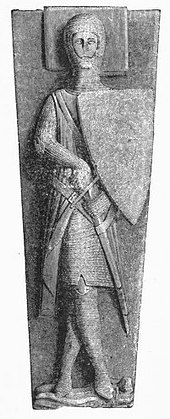This article needs additional citations for verification. (May 2009) |

A church monument is an architectural or sculptural memorial to a deceased person or persons, located within a Christian church. It can take various forms ranging from a simple commemorative plaque or mural tablet affixed to a wall, to a large and elaborate structure, on the ground or as a mural monument, which may include an effigy of the deceased person and other figures of familial, heraldic or symbolic nature. It is usually placed immediately above or close to the actual burial vault or grave, although very occasionally the tomb is constructed within it. Sometimes the monument is a cenotaph, commemorating a person buried at another location.
Once only the subject of antiquarian curiosity, church monuments are today recognised as works of funerary art. They are also valued by historians as giving a highly detailed record of antique costume and armour, by genealogists as a permanent and contemporary record of familial relationships and dates, and by students of heraldry as providing reliable depictions for heraldic blazons. From the middle of the 15th century, many figurative monuments started to represent genuine portraiture where before had existed only generalised representations.

© MMXXIII Rich X Search. We shall prevail. All rights reserved. Rich X Search
